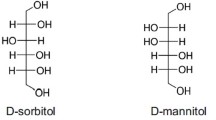Summary
In cats anesthetized with sodium pentobarbital the thoracic duct was cannulated and the antidiuretic activity (ADA) of lymph was assayed in rats in alcohol anesthesia. The ADA was also determined in the plasma and serum of the same cat. In normally hydrated cats the ADA in plasma was equivalent to about 1 μU/ml Pitressin, whereas in lymph the ADA was not detectable. In cats deprived of fluid for 24 hours the ADA in lymph was about 20% of that in plasma, the latter having an ADA of ca. 3 μU/ml Pitressin. One hour after a single injection of high dosages of Pitressin an ADA in the lymph was not detectable. During Pitressin infusions of long duration an ADA could be measured in the lymph. It was about one third to one fifth of that found at the same time in the plasma. Incubation of Pitressin (10 μU/ml) in plasma at 37° C did not result in a loss of ADA. Incubation with lymph or serum under identical conditions led to a reduction of the ADA to about one quarter of the original value within 30–60 minutes. The very similar ratio of the ADA in plasma and in lymph of dehydrated animals on one hand and animals treated with a continuous infusion of Pitressin on the other may depend on the filtration rate of ADH into the interstitium and the rate of its inactivation by the lymph.
Zusammenfassung
Bei Katzen in Pentobarbitalnarkose wurde der Ductus thoracicus kanüliert und die Lymphe auf antidiuretische Aktivität (ADA) an alkoholnarkotisierten Ratten geprüft. Die ADA in Lymphe wurde mit der in Plasma und Serum verglichen. In normal hydrierten Katzen entsprach die ADA im Plasma ungefähr 1 μE/ml Pitrissin; in Lymphe war eine ADA nicht nachzuweisen. Nach 24 Std Flüssigkeitsentzug war die ADA in der Lymphe etwa 20% der ADA im Plasma (etwa ≈3 μE Pitressin). Bei einmaliger Injektion hoher Pitressin-Dosen wurde nach 1 Std keine ADA in Lymphe festgestellt. Nach Dauerinfusion von Pitressin erwies sich die ADA in der Lymphe als 3–5 mal kleiner als im Plasma. Pitressin (10 μE/ml) wurde im Plasma während einer einstündigen Inkubation bei 37° C nicht inaktiviert. Bei Inkubation der gleichen Menge Pitressin mit Lymphe waren nach 1 Std Dreiviertel der ursprünglichen ADA verschwunden. Eine fast gleiche Inaktivierungsrate fand sich im Serum. Das annähernd gleiche Verhältnis der ADA in Plasma und Lymphe von Dursttieren einerseits und normalen Tieren nach intravenöser Dauerinfusion von Pitressin andererseits hängt wahrscheinlich ab von dem Verhältnis der Filtrationsrate des ADH in den extravasalen Raum und der Geschwindigkeit des Abbaus in der Lymphe.
Similar content being viewed by others
Literatur
Bocanegra, M., and H. D. Lauson: Ultrafilterability of endogenous antidiuretic hormone from plasma of dogs. Amer. J. Physiol. 200, 486 (1961).
Chen, P. S., and K. Lane: Specific activity of inulin-C14OOH in serum and lymph of nephrectomized dog. Proc. Soc. exp. Biol. (N.Y.) 116, 40 (1964).
Dyke, H. B. van, B. F. Chow, R. O. Greep, and A. Rothen: The isolation of a protein from the pars neuralis of the ox pituitary with constant oxytocic, pressor and diuresis-inducing activities. J. Pharmacol. exp. Ther. 74, 190 (1942).
Ginsburg, M., and H. Heller: Antidiuretic activity in blood obtained from various parts of the cardiovascular system. J. Endocr. 9, 274 (1953).
—— —— The clearance of injected vasopressin from the circulation and its fate in the body. J. Endocr. 9, 283 (1953).
Hansen, H. G.: Die Physiologie des Lymphozytenwechsels und seine Beeinflußbarkeit durch Hormone des Hypophysen-Adrenal-Systems. Stuttgart: G. Thieme 1958.
Heller, H.: The metabolism and fate of the neurohypophysial principles. In: The Neurohypophysis, p. 77, edited by H. Heller. London: Butterworth 1957.
Hör, G., H. Avenhaus u. E. Buchborn: ADH-Plasmaspiegel und -verteilungsraum nach exogener Zufuhr von ADH am Menschen. Untersuchungen zum Problem der hepatischen ADH-Inaktivierung bei Gesunden und bei Lebercirrhose. Klin. Wschr. 41, 366 (1963).
Lauson, A. D., and M. Bocanegra: Clearance of exogenous vasopressin from plasma of dogs. Amer. J. Physiol. 200, 493 (1961).
Share, L.: Rate of disappearance of arginine vasopressin from circulating blood in the dog. Amer. J. Physiol. 203, 1179 (1962).
Tata, P., u. O. H. Gauer: Demonstration einer Methode zur Bestimmung kleinster Vasopressinmengen. Pflügers Arch. ges. Physiol. 278, 102 (1963). Abstr., ausführliche Arbeit in Vorbereitung.
Vogel, G., u. H. Ströcker: Die Penetration von Polyvinylpyrrolidon durch die Plasma-Lymph-Schranke bei Ratten. Pflügers Arch. ges. Physiol. 279, 187 (1964).
Wasserman, K., and H. S. Mayerson: Exchange of albumin between plasma and lymph. Amer. J. Physiol. 165, 15 (1961).
Author information
Authors and Affiliations
Additional information
Mit 1 Textabbildung
Die Untersuchungen wurden durch die Deutsche Forschungsgemeinschaft und den Research Grant AF EOAR 64-16 der U.S. Air Force, Brüssel Office, unterstützt.
Institut für Arbeitshygiene und Berufskrankheiten, Prag, Tschechoslowakei, als Gast.
Rights and permissions
About this article
Cite this article
Tata, P., Heller, J. & Gauer, O.H. Über die antidiuretische Aktivität in der Lymphe von Katzen. Pflugers Arch. 283, 222–229 (1965). https://doi.org/10.1007/BF00412941
Received:
Issue Date:
DOI: https://doi.org/10.1007/BF00412941



